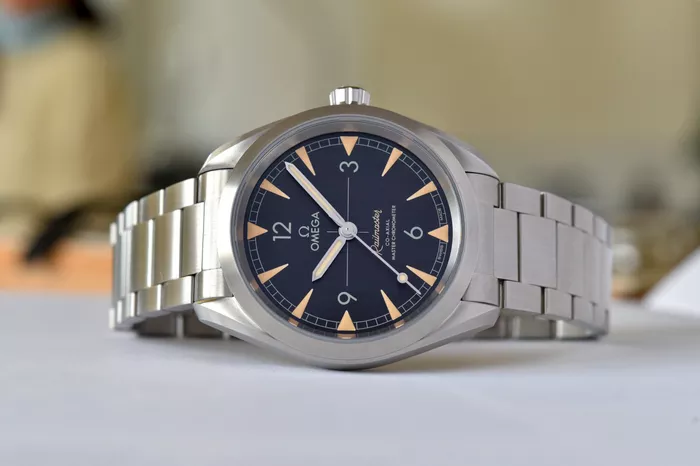The Omega Speedmaster is a legendary watch with a rich history, especially known for its association with space exploration. One of its most defining features is its intricate dial design. This article will delve into the specifics of the Omega Speedmaster dials, exploring their various components, functions, and design elements. This comprehensive guide will cover the different types of dials found on the Omega Speedmaster, their functionalities, and the significance of each element.
Overview of the Omega Speedmaster
Before diving into the specifics of the dials, it’s essential to understand the Omega Speedmaster’s background. The Speedmaster, introduced in 1957, is renowned for its role in NASA’s space missions, including the Apollo moon landings. Its design has evolved over the decades, but its core features, especially the dials, have remained crucial to its identity.
Components of the Omega Speedmaster Dial
The Omega Speedmaster’s dial is composed of several key elements, each serving a specific purpose. Here’s a detailed breakdown:
1. Main Dial
The main dial of the Speedmaster is the central part of the watch face where the primary timekeeping occurs. It typically features:
Hour Markers: These are usually applied markers, which may be in the form of dots, bars, or Roman numerals. They are designed for clarity and legibility.
Hands: The watch usually includes three primary hands: the hour hand, minute hand, and second hand. These hands are often luminescent to ensure readability in low light conditions.
2. Sub-Dials
Sub-dials are smaller dials on the Speedmaster that provide additional functions. Depending on the model, the Speedmaster may have one or more sub-dials, including:
Chronograph Sub-Dials: These are used to measure elapsed time. Commonly, there are two or three chronograph sub-dials:
30-Minute Counter: Located at 3 o’clock, it tracks minutes during a chronograph session.
12-Hour Counter: Positioned at 6 o’clock, it tracks hours during a chronograph session.
Small Seconds Counter: Located at 9 o’clock, it shows the running seconds of the chronograph function.
Date Sub-Dial: Some Speedmaster models include a date function, usually located at 6 o’clock.
3. Tachymetric Scale
One of the distinguishing features of many Speedmaster models is the tachymetric scale, usually found on the bezel or outer edge of the main dial. This scale allows the wearer to measure speed based on time elapsed. The tachymetric scale is particularly useful in motorsports and aviation.
4. Bezel
The bezel is an important part of the dial’s design, especially in chronograph models. It often includes:
Tachymetric Scale: As mentioned above, this scale is used for calculating speed.
Telemetric Scale: Some models include a telemetric scale for measuring distance based on time and sound.
5. Luminescence
Many Speedmaster models feature luminescent elements, including the hands and markers. This luminescence is achieved using materials such as Super-LumiNova, which glows in the dark and improves readability in low-light conditions.
Types of Omega Speedmaster Dials
Omega has produced various Speedmaster models over the years, each with its own unique dial characteristics. Here’s a look at some of the prominent types:
1. Omega Speedmaster Professional Moonwatch
Dial Layout: This iconic model features a black dial with three sub-dials: 30-minute counter, 12-hour counter, and small seconds counter.
Markers: The hour markers are usually white or silvered, and the hands are coated with luminescent material.
Tachymetric Scale: The bezel features a tachymetric scale, which is crucial for the watch’s historical association with space missions.
2. Omega Speedmaster Reduced
Dial Layout: The Speedmaster Reduced has a slightly different layout compared to the Professional model, with sub-dials arranged differently.
Markers and Hands: Similar to the Professional model but may vary slightly in design and placement.
Bezel: Some versions of the Reduced model may not feature a tachymetric scale.
3. Omega Speedmaster Racing
Dial Layout: The Racing models often feature a more sporty design with different sub-dial arrangements and additional details.
Markers: The markers may be styled differently, often with a more contemporary look.
Bezel: Some Racing models have a different style of tachymetric scale or even additional scales for specific functions.
4. Omega Speedmaster X-33
Dial Layout: The X-33 models are digital-analog hybrids, featuring both traditional hands and digital displays.
Markers and Hands: The traditional elements are complemented by digital readouts for additional functionality.
Bezel: These models might include specific scales or buttons for digital features.
See Also: How To Remove Bracelet From Omega Seamaster 300
Key Design Features and Innovations
The Omega Speedmaster has undergone numerous design innovations over the years. Some of the key features and advancements include:
1. Co-Axial Escapement
Omega’s Co-Axial escapement technology, introduced in the late 1990s, improves the watch’s accuracy and longevity by reducing friction between the movement’s components. Some Speedmaster models incorporate this technology, which impacts the overall performance and reliability of the watch.
2. Sapphire Crystal
Modern Speedmaster models feature sapphire crystal over the dial, offering enhanced scratch resistance and clarity compared to earlier acrylic crystals.
3. Movement Variations
Different Speedmaster models utilize various movements, including Omega’s in-house calibers. The movement affects the functionality of the dials and sub-dials, providing different features and precision levels.
Practical Considerations
When choosing a Speedmaster model, consider the following practical aspects:
Legibility: Ensure the dial is easy to read under various lighting conditions.
Functionality: Choose a model that fits your needs, whether you require a chronograph function, date display, or additional features.
Aesthetics: Select a design that aligns with your personal style and preferences.
Conclusion
The Omega Speedmaster’s dials are a testament to the watch’s rich history and advanced engineering. From its classic moonwatch design to modern variations, the Speedmaster’s dial components, including the main dial, sub-dials, tachymetric scale, and bezel, offer a blend of functionality and style. Understanding these elements helps appreciate the intricacies of this iconic timepiece and its evolution over the years.

